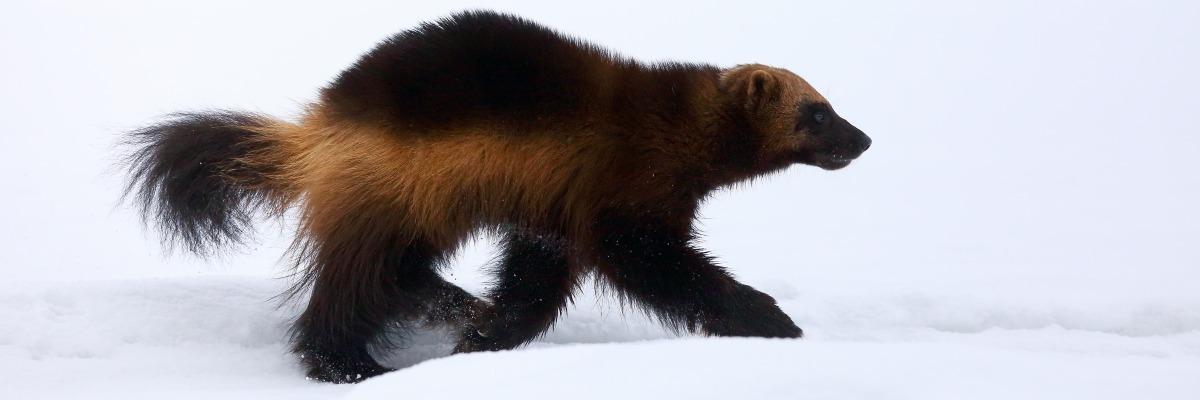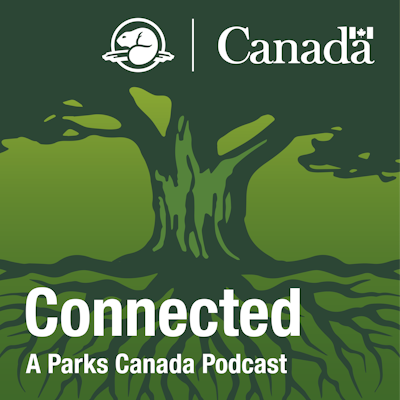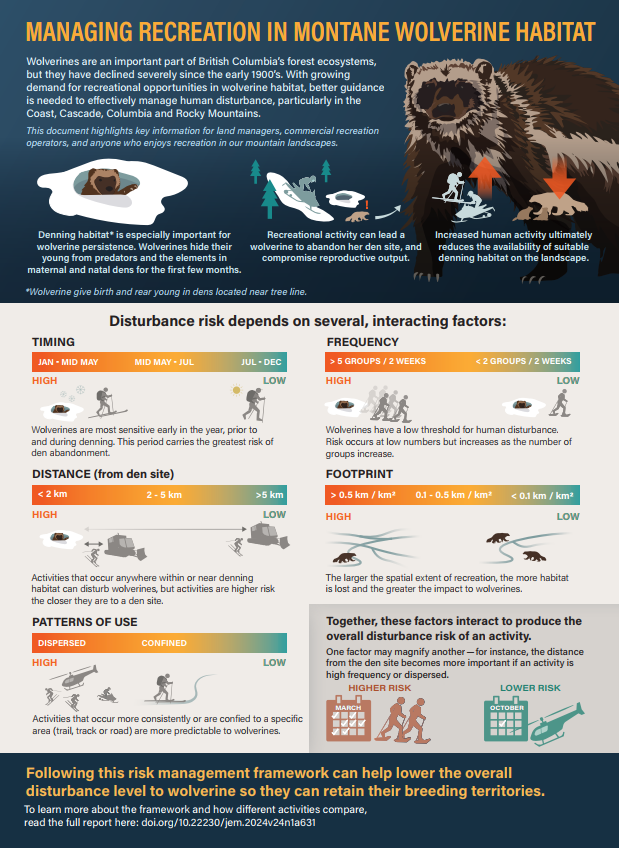
Wolverine
Kootenay National Park
Quick facts
Eats carcasses and prey animals
Travels long distances across rugged terrain
Likes connected wilderness with few humans
Weighs up to 40 lbs
SARA status: Special Concern (2018)
Wolverines are the largest land-dwelling members of the weasel family. They have long, bushy tails and big feet that move easily across snow. Every wolverine has a unique, light patch of fur on its chest. These chest patches are used to identify individuals—almost like a fingerprint!
Wolverines are not picky eaters. Their Latin name, gulo, means glutton. They like to scavenge, feeding on the carcasses of large animals. Their strong jaw muscles can crush bones and frozen meat. Wolverines also hunt prey animals like marmots and mountain goats.
Connected: A Parks Canada Podcast New
All animals and plants are protected inside the national parks, but some need extra help. Connected will introduce you to species at risk that are in danger of disappearing.
How do you learn about an animal that you never see!?! In Episode 4: Wolverine (12:20), Wildlife Ecologist Anne Forshner talks about the challenges, and solutions, to studying wolverines. These rare animals avoid humans and need large areas of wilderness to survive. Journey into the wild with Parks Canada and find out how you can contribute to wolverine research. Find ways to listen for free below.
Where they live
Wolverines are found in forested wilderness, mountain environments, and arctic tundra. They use high-elevation habitats with steep and rugged terrain. Wolverines often travel far in search of food. Males have home ranges up to 1582 km2 — an area larger than Kootenay National Park!
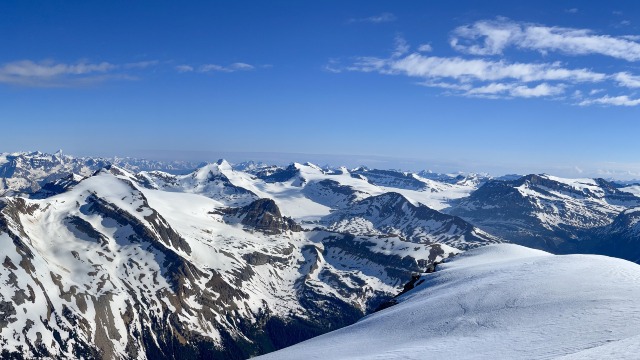

Why they are at risk
Habitat fragmentation
Wolverines need vast stretches of wilderness to survive. These areas support important food sources such as: 1) carcasses left by other predators; and 2) large prey animals like mountain goats and caribou.
Both in and outside of the park, human activities and developments like towns, roads and railways can break up their habitat.
Human disturbance
Wolverines are very sensitive to human activity and avoid areas with people. Winter activities in the park, like backcountry skiing, can disturb denning females and their young.
Outside of the park, wolverines are threatened by additional activities like hunting, trapping, overharvest and motorized recreation.
Climate change
A warming climate will likely affect wolverines because they are a snow-adapted species. For example:
- Females like to den in areas where snow accumulates.
- Snow and cold temperatures help preserve food caches.
- A snow-covered landscape is easier for wolverines to move across.
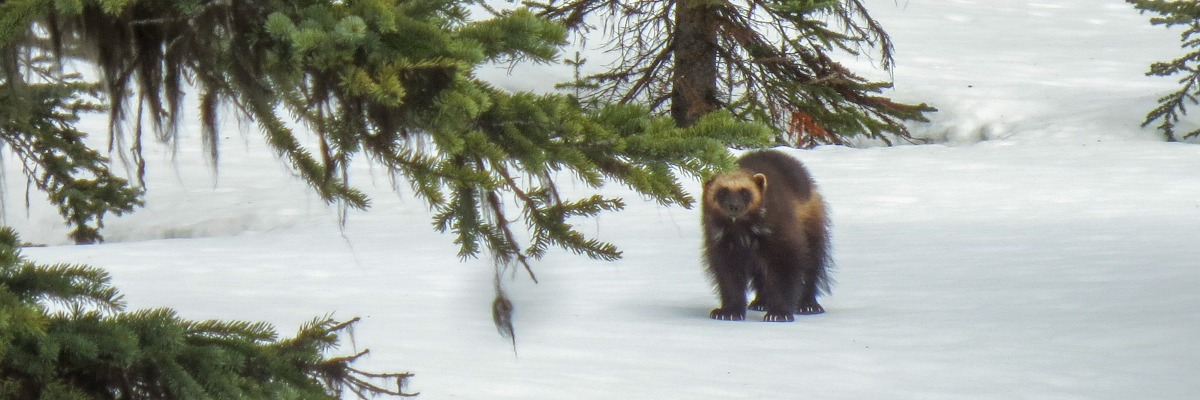
How Parks Canada is helping
Monitoring
Parks Canada sets up remote wildlife cameras to monitor wolverine activity in the park. Camera images help us understand how wolverines use habitat, and how many individuals there are.
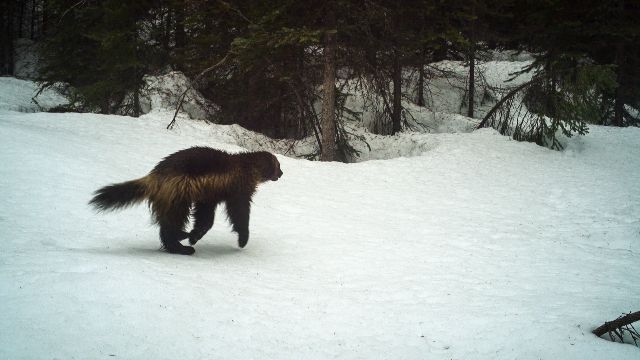
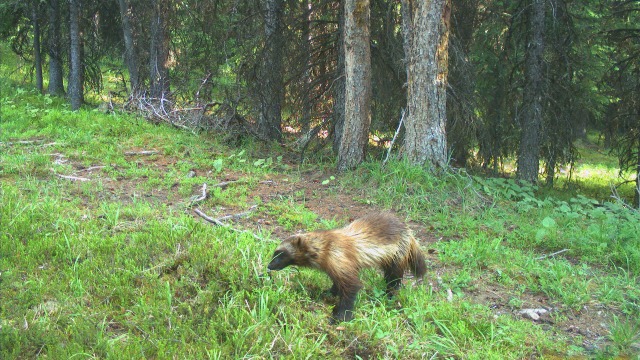
Protecting habitat
In Kootenay National Park, wolverines and their habitat are protected by law under the National Parks Act and Canada’s Species at Risk Act. Inside protected areas like the national parks, wolverine density can be 3 times higher than unprotected areas.
Research
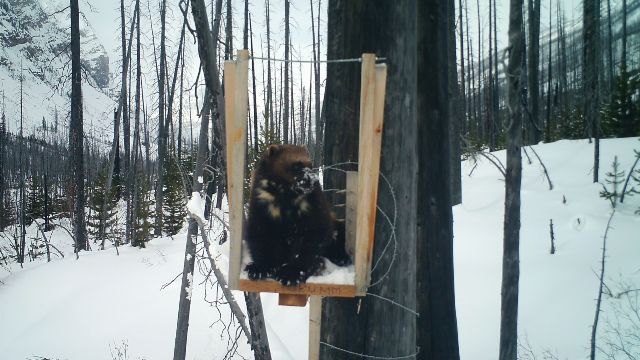
Parks Canada collaborates with other scientists and agencies to learn more about wolverines. For example, staff participated in a 10-year study of wolverine populations in the Canadian Rocky Mountains. Data was collected from remote cameras and bait stations within Kootenay, Yoho, and Banff national parks. The results showed that:
- The number of wolverines in the study area declined by 39% over ten years.
- The likelihood of wolverines being in an area decreases with more human recreation and development.
- Snow is important to wolverines, and more were found in areas with persistent spring snow.
How you can help
It’s rare to see a wolverine! Their low population densities and elusive nature make them hard to study. You can contribute to research by reporting wolverine and track sightings to Parks Canada at llyk.wildlife@pc.gc.ca.
If possible, please do the following:
– Record the time, date, and location (GPS coordinates or Google Earth pin).
– Take multiple photos of the tracks (close up and track pattern). Include an item like a glove for scale.
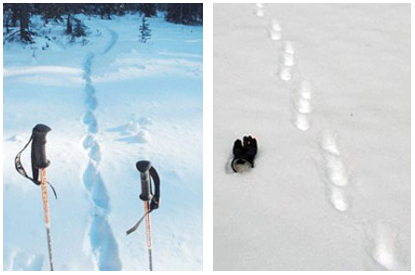
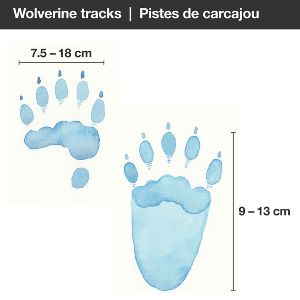
Never follow tracks towards an animal.
If you think you are near a wolverine den, leave the area immediately and notify park staff. Dens can be identified by several sets of tracks leading to and from a hole in the snow. Please do not approach the den. This puts the babies at risk because the female wolverine may abandon the den.
Learn more
- Date modified :


